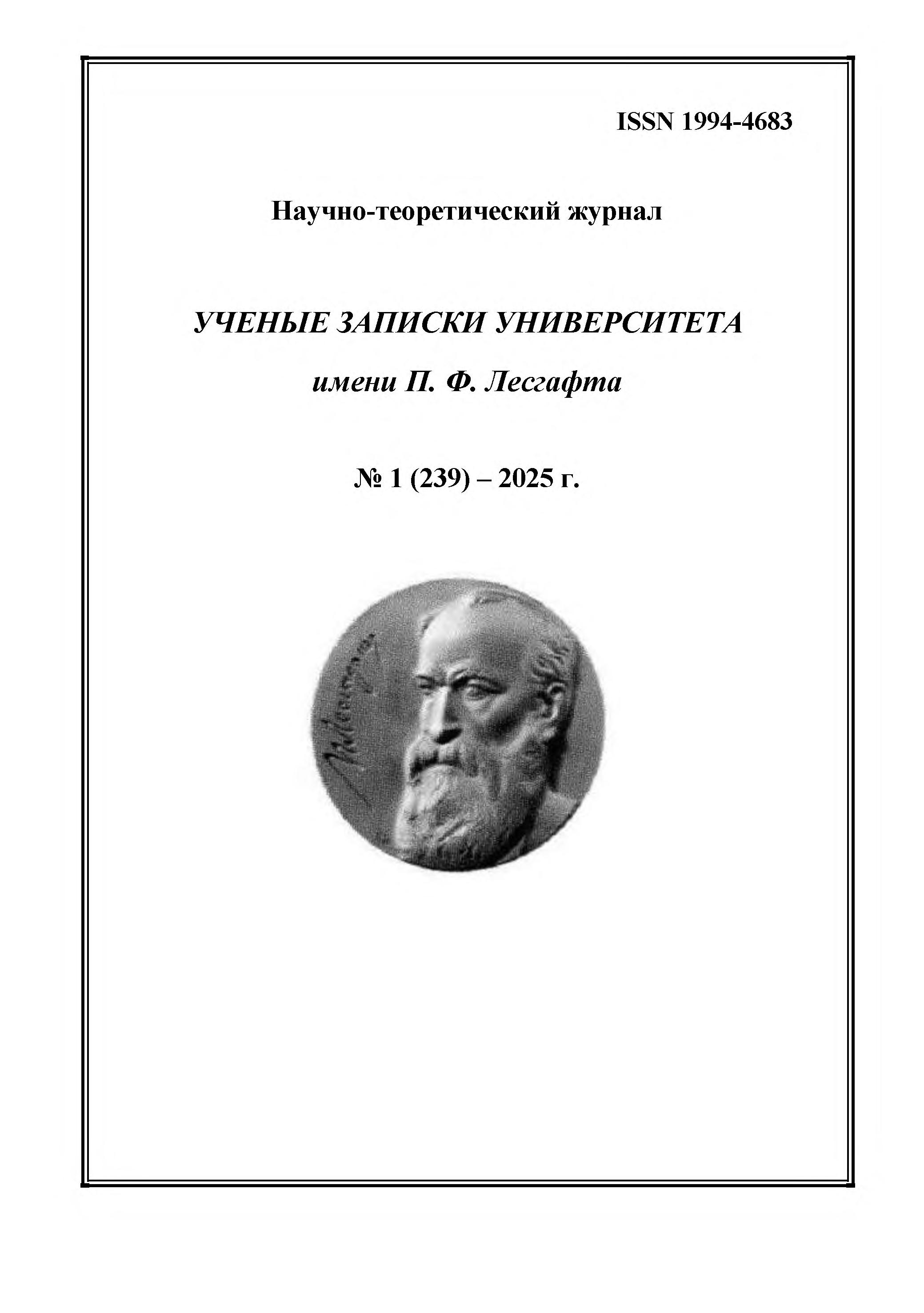employee from 01.01.2021 until now
Moscow, Moscow, Russian Federation
CSCSTI 77.29
The purpose of the study is to determine the relative contribution of each component of specialized training in martial artists of different qualifications. Research methods and organization. The study involved athletes aged 18-26, ranging from novices to masters of sport. The average group weight of weightlifters was 80.5 kg, while for arm wrestlers it was 75.5 kg. To determine the specific weight of each of the components of the special preparedness of martial artists of varying qualifications, an educational testing procedure was conducted. Three tests assessed the level of strength training of athletes with different qualifications. Each of the three tests was performed twice - with weights and without, from which a coefficient for the strength or speed component was calculated. Research results and conclusions. The results of the study indicated that in weightlifters, as their sporting skill increases, the rate of growth of the strength component of the leg muscles prevails over the growth of the speed component of the arm muscles. In arm wrestlers, as their sporting skill increases, the rates of growth of the speed component of the arm muscles prevail over the growth of the strength component of the leg muscles.
weightlifting, arm wrestling, sports mastery, speed-strength training readiness, strength component, speed component
1. Aksenov M. O., Aksenova A. V. (2015), “Building a training process for athletes of weightlifting sports based on bioimpedance analysis data”, Theory and practice of physical culture, No 12, pp. 74–76.
2. Bolshoy A. V., Zagrevsky O. I. (2019), “Trends in the training process of highly qualified weightlifters”, Sovremennye problemy nauki i obrazovaniya, No 3, pp. 56–63.
3. Markin E. V. (2024), “Scientific research and educational and methodological support for the modern development of arm sports in Russia”, Fizicheskaya kul'tura: vospitanie, obrazovanie, trenirovka, No. 1, pp. 5–7.
4. Dvorkin L. S., Dokuchaev P. D. (2003), “Theoretical and methodological aspects of the speed-strength fitness’s factor structure of karatekas of different age”, Sovremennye voprosy biomediciny, 2023, vol. 7, no. 3, DOIhttps://doi.org/10.24412/2588-0500-2023_07_03_3.
5. Akhmetov R. S., Vityutnev E. E. (2018), “Dynamics of training loads and speed and strength training of highly qualified weightlifters at the stage of pre-competitive training”, Uchenye zapiski universiteta imeni P.F. Lesgafta, No. 12 (166), pp. 11–15.
6. Ippolitov N. S. (2011), “Studies of the prognostic significance of speed and strength qualities in adolescents in the selection of weightlifting classes”, Abstract of the dissertation of the Candidate of Pedagogical Sciences, Leningrad.
7. Zhivoderov A. V. (2013), “Technical training of arm wrestlers at the stage of initial sports specialization”, Uchenye zapiski universiteta imeni P.F. Lesgafta, No. 4, pp. 114–116.
8. Matyushenko I. A., Antonov A. V., Nikulin E. I. (2020), “Model characteristics of strength indicators of individual muscle groups of arm wrestlers of various qualifications”, Theory and practice of physical culture, No. 8, pp. 19–21.
9. Podrihalo O. O., Podrigalo L. V., Bezkorovainyi D. O., Halashko O. I., Nikulin I. N., Kadutskaya L. A., Jagiello M. (2020), “The analysis of handgrip strength and somatotype features in arm wrestling athletes with different skill levels”, Physical education of students, No 24 (2), pp. 120–126.
10. Getmansky I. I., Priymak A. A. (2021), “The influence of training factors on the manifestation of muscle strength in the speed-power sport of arm wrestling”, Pedagogicheskie nauki. Fizicheskoe vospitanie i fizicheskaya kul'tura, No 9 (144), pp. 64–66.
11. Pronin E. A., Anisimov M. P., Davidenko I. A., Fadeev A. S. (2022), “Analysis of the technique of classical exercises in weightlifting depending on the method of barbell grip”, Uchenye zapiski universiteta imeni P.F. Lesgafta , No 6 (208), pp. 312–315.
12. Markin E. V. (2024), “Physical development and functional condition of arm wrestlers at the stage of advanced training”, Fizicheskaya kul'tura: vospitanie, obrazovanie, trenirovka, No 6, pp. 38–41.
13. Tronin R. A. (2020), “The process of professional training of wrestlers”, Nauka, No 5 (41), pp. 116–119.
14. Afanasyev M. V., Trutnev B. M. (2019), “Arm wrestling as a sport. Scientific foundations of armwrestling analysis”, Nauk Sbornik statei itogovoi nauchnoi konferentsii Voenno-nauchnogo obshchestva Voennogo instituta fizicheskoi kul'tury za 2019 goda, St. Petersburg, Part 1, pp. 24–26.
15. Zhivoderov A. V., Zhivoderov V. A., Ryabchuk V. V., Blokhin S. A. (2019), “The concept of developing the counterattacking movement of armwrestling athletes with a passive physiological hand position”, Uchenye zapiski universiteta imeni P.F. Lesgafta, No 8 (174), pp. 67–70.
16. Budaev M. L. (2021), “The relationship of strength indicators in control exercises with the effectiveness of arm wrestling”, Pedagogіka, Psіkhalogіya, metodyka. VESNІK MDU іmya A. A. Kulyashova, No 2 (58), pp. 61–67.








